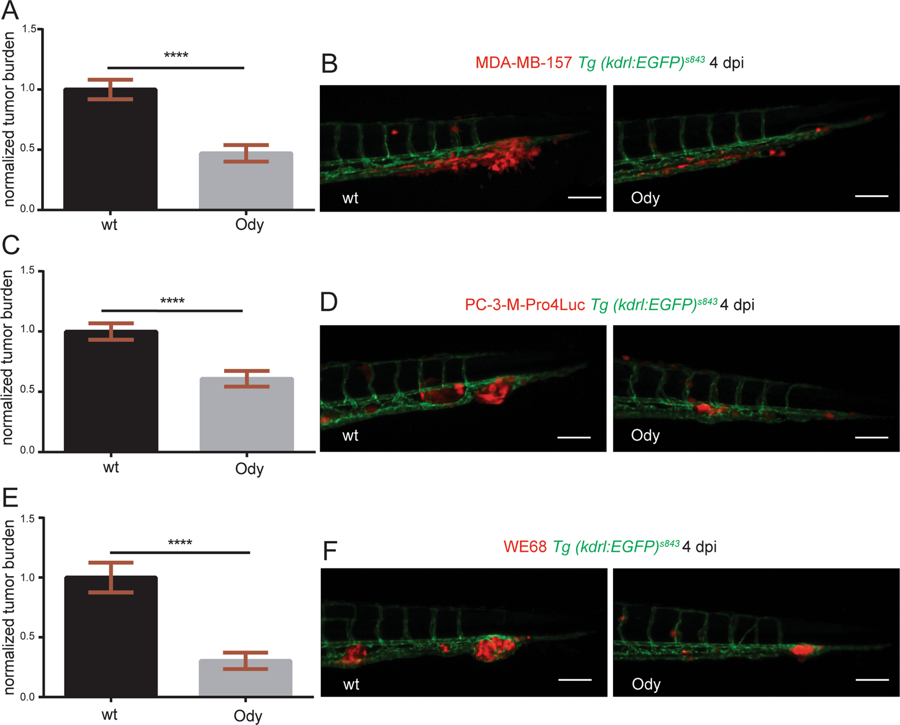Fig. 3
cxcr4b deficient host blocks metastatic burden of different tumor types. (A) Metastatic burden was assessed in 4 dpi zebrafish larvae engrafted with the triple negative breast line MDA-MB-157 mCherry. A 52% reduction was found. Data are mean ± SEM of two independent experiments (wt: n = 42, ody: n = 28). Un-paired t-test, with Welch’s correction ****p < 0.0001. (B) Secondary tumor mass, extravasation and invasion failed to occur in ody mutants compared to wt siblings. (C) A significantly lower tumor burden in cxcr4b deficient larvae was observed when the prostate cancer PC3-M-Pro4-Luc2 mCherry or td-tomato cell line was implanted (38% reduction). Data are mean ± SEM of two independent experiments (wt: n = 48, ody: n = 46). Un-paired t-test ****p < 0.0001. (D) Prostate cancer early metastasis formation, characterized by a solid tumor mass formation in the CHT region of zebrafish larvae, occurred in wt siblings and was significantly decreased when Cxcr4b signaling was impaired in the host. (E) Relative metastatic burden of Ewing sarcoma cell line WE-68 td-tomato was affected in ody mutants compared to wt larvae at 4 dpi (70% reduction in tumor burden in the tail fin). Data are mean ± SEM of two independent experiments (wt: n = 69, ody: n = 39). Un-paired t-test, with Welch’s correction ****p < 0.0001. (F) Ewing sarcoma cells formed a compact and expanding tumor mass in the CHT region, between the dorsal aorta and the caudal vein. A reduced tumor cell aggregate was present in the ody mutant line at 4 dpi. Scale bars: 50 µm. Micrographs were acquired using a Leica MZ16FA fluorescent microscope coupled to a DFC420C camera.

